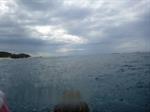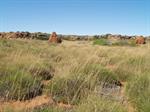Study Climatology and Learn More about the fascinating world of the weather.

- Learn about atmospheric conditions, which are generally caused by factors such as temperature, wind, air pressure and water vapour at any specific time.
- Learn about different climates and how they are influenced.
- Study climate change and extreme weather events.
- Undertake a Problem Based Learning Project - plan and apply what you have learned in the course.
The atmosphere is made up of a mixture of moisture, temperature and gases which, in one way or another, control the conditions that are vital for the occurrence of life on earth. These conditions are always somewhat active, and are subject to change at every moment in time. The variations in the atmosphere along with the earth’s energy dynamics play a major role on what influences an everyday environmental behaviour. This, along with the movement of the earth and the suns radiation, produces continuous and aggregate conditions of climate and weather phenomena that affect, positively or negatively, life on earth.
Course Duration100 hours of self paced study
COURSE STRUCTURE
There are eight lessons in this course.
Lesson 1: Nature and Scope of Climatology
- Introduction to climatology & meteorology
- Understanding how climate and weather affects us
- What makes up our weather?
- How do we measure weather?
Lesson 2: Weather Science Foundations
- Solar Radiation
- Temperature
- Precipitation
- Deposition
- Humidity
- Clouds
Lesson 3: Circulation Patterns
- Pressure Systems
- Atmospheric Pressure
- Pressure and Temperature
- Latitudinal Circulation
- Air masses
- Wind
- Trade Wind
- The Beaufort Scale of Wind Speed
- Frontal Systems
- Oceanic circulation
- Longitudinal Circulation
- Southern Oscillation
- Ocean Gyres (system of ocean currents)
 Lesson 4: Climate Classifications & Patterns
Lesson 4: Climate Classifications & Patterns
- Types of Climate
- Arid/Desert
- Subtropical
- Tropical
- Temperate
- Mediterranean
- Coastal
- Factors Which Influence Climate
- Latitude
- Wind Direction
- Topography
- Altitude
- Aspect
- Geographical Location
- Climates Classification Models
- Koppen Climate Classification
- Thornwaite Climatic Classification System
- Bergeron Climatic Classification System
- Spatial Synoptic Classification (SSC)
- Other Global Classification Systems
- Holdridge Life Zone System
Lesson 5: Atmospheric Dynamics
- Introduction to Atmosphere Composition
- Purpose of the Atmosphere
- Seasonal Variations
- Vertical Structure of Atmosphere
- Precipitation
- Precipitation Processes and Other Events
- Cloud Dynamics
- Storms
- Thunderstorms
- Cyclones, Typhoons and Hurricanes
- Tornadoes
- METAR Codes for Precipitation Processes
- Aerosols and Climate Processes
- Indirect Effects of Aerosols
Lesson 6: Climate Changes
- Factors that Cause or Influence Climate Change
- Natural Causes
- The Sun
- Earth's Orbit
- Earth's Axis
- Oceanic Circulation
- Oceanic Carbon Dioxide
- Magnetic Field
- Plate Tectonics
- Volcanic Activities
- Asteroids, Comets or Meteorite Impact
- Manmade Causes or Anthropogenic Influences
- Fossil Fuels
- Agriculture
- Deforestation
- Nitrous Oxide
- Other Pollution
- Different Types of Climate Change Events
- Glaciation and Ice Loss
- Flora and Fauna
- Ocean Warming and Sea Levels
- Permafrost
- Extreme Weather Events
- Ozone Depletion
- Global Warming and the Greenhouse Effect
 Lesson 7: Applications of Climate Science
Lesson 7: Applications of Climate Science
- Evolution of Methods and Techniques of Weather
- Forecasting
- Early Methods & Simple Techniques
- Modern Forecasting Approaches
- Synoptic (Traditional) Forecasting
- Numerical Weather Prediction (NWP)
- Statistical Methods
- Long and Short Range Forecasting
- Understanding Forecasting Models
- Simple Models
- Tropical Cyclone Forecast Model
- General Circulation Model (GCM)
- Regional Climate Modelling
- Collection and Applications of Weather & Climate Data
- Weather Mapping
- Satellite
- Radar
- Tropical Rainfall Measuring Mission (TRMM)
- Verification Methods
- Methods of Standard Verification
Lesson 8: Climatology Problem Based Learning Project
- Management Processes
- Planning
- Organising
- Leading
- Controlling
- Business Plans - Preparing a Plan
- Decision Making
- What to Plan for
- Risk
- Risk Analysis
- Ways to Manage Risk
- PROJECT PLAN
WHY WEATHER CHANGES?
 The weather constantly changes from day to day and season to season. We all know this, but you need to study climatology to properly understand it.
The weather constantly changes from day to day and season to season. We all know this, but you need to study climatology to properly understand it.
There are many factors that can cause weather to change; and every one of those factors is a complex area of study by itself. Consider just wind, for instance.
Winds are related to high and low pressure systems and are produced by the differences in atmospheric pressure and the unequal heating of the earth’s surface. In saying, the atmosphere works as if it were a ‘heat-transfer machine’, always aiming to create balance; it will attempt to shift warm air towards the poles and cool air towards the equator.
Normally, winds should flow from areas of high pressure to areas of low pressure; however, due to the rotation of the earth, the directions of the winds are deflected by the Coriolis force to the right in the northern hemisphere and to the left in the southern hemisphere, flowing side by side to the isobars.
The Coriolis force is strongest at the poles and weaker at the equator. As the earth rotates around the sun, the inclination of the earth’s axis produces the equator to move north and south between the tropics of Cancer and the tropics of Capricorn. The series of air movements produced by vertical and horizontal air flows is referred to as pressure belts. The pressure belts move seasonally and depend on the movement of the sun along the north and south hemisphere. There are 7 pressure belts occurring on the surface of the earth:
- Polar High
- Sub-Polar Low or Low Pressure Belt – 60° north latitude
- Subtropical High or High Pressure Belt (Horse Latitudes) – 30° north latitude
- Equatorial Low Pressure Belt (Doldrums) - 0o latitude
- Subtropical High or High Pressure Belt (Horse Latitudes) – 30° south latitude
- Sub-Polar Low or Low Pressure Belt - 60° south latitude
- Polar High
In general, the equator ‘equalises’ the system as the winds there tend to flow from high pressure to low pressure. The area of the equator referred to as the doldrums receives its name because there is no horizontal air movement in that area. The low pressure is due to the heat in that zone, which makes the air rise vertically (often leading to tropical thunderstorms), until it diminishes back in the horse latitudes. The doldrums is also known as the inter-tropical convergence zone (ITCZ).
In between these belts, there are occurring winds which, depending on the direction (deflected by the Coriolis force), they are referred to as:
- Trade winds, between 0-30 degrees
- Westerly winds, between 30-60 degrees
- Polar winds, between 60-90 degrees (polar easterlies and polar front)
Trade Winds
Trade winds are the prevailing surface winds found in the tropics. They generally travel in an easterly direction towards the equator, so those in the Northern hemisphere move in a north easterly direction to the equator, and those in the southern hemisphere move in a south easterly direction.
Due to their location in the mid-latitude regions, westerly winds are constantly affected by the migration of cyclones and anticyclones as well as by the drastic temperature gradients during the winter months. Also, due to the Coriolis effect the westerly winds are usually moving from the subtropical areas towards the poles.
Distance Learning - specialist training, fully supported
The ACS Climatology course is studied by Distance Learning. You have the option to study online or by eLearning (USB memory stick). In addition to high quality course notes, you are supported in your studies by our specialist tutors. They have a wealth of knowledge and experience in their field. At the end of each lesson, there is an assignment for you to complete and submit to the School. This will be marked by your tutor and returned to you with their feedback on your work. If you have any questions or need additional guidance whilst you are studying, your tutor is their to help you.
You can enrol on the Climatology course at any time, and you study at your own pace. If you have any questions, or want to know more, get in touch with us today. You can phone us on (UK) 01384 442752 (or, outside UK on +44 (0) 1384 442752), or you can connect with our specialist tutors using our FREE COURSE COUNSELLING SERVICE.